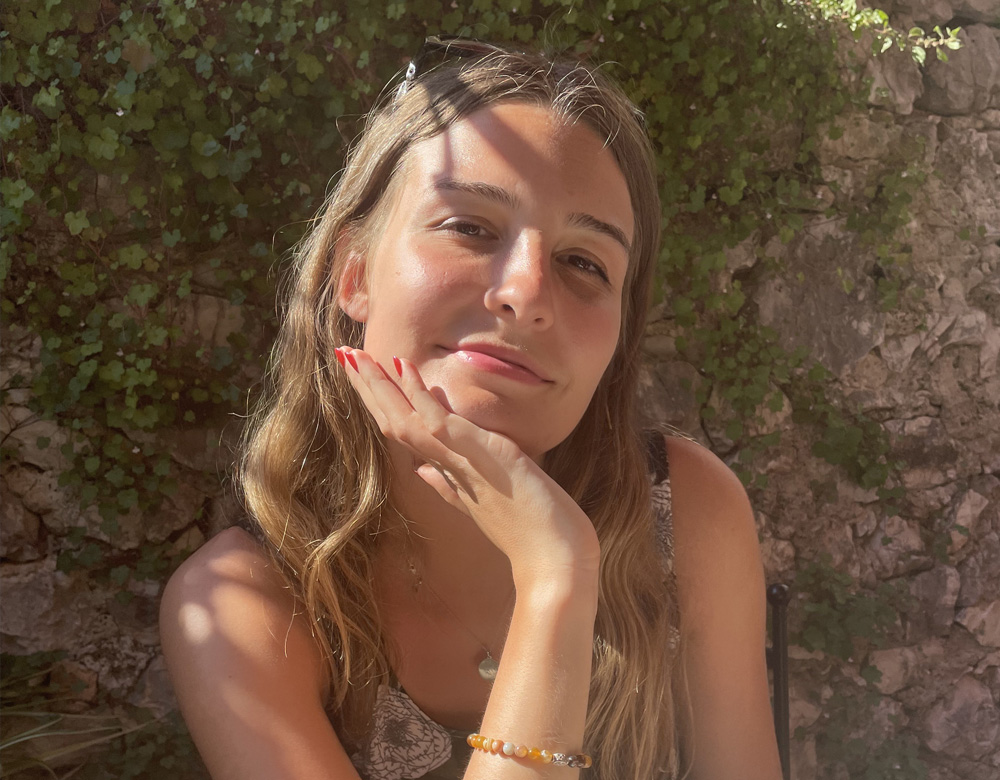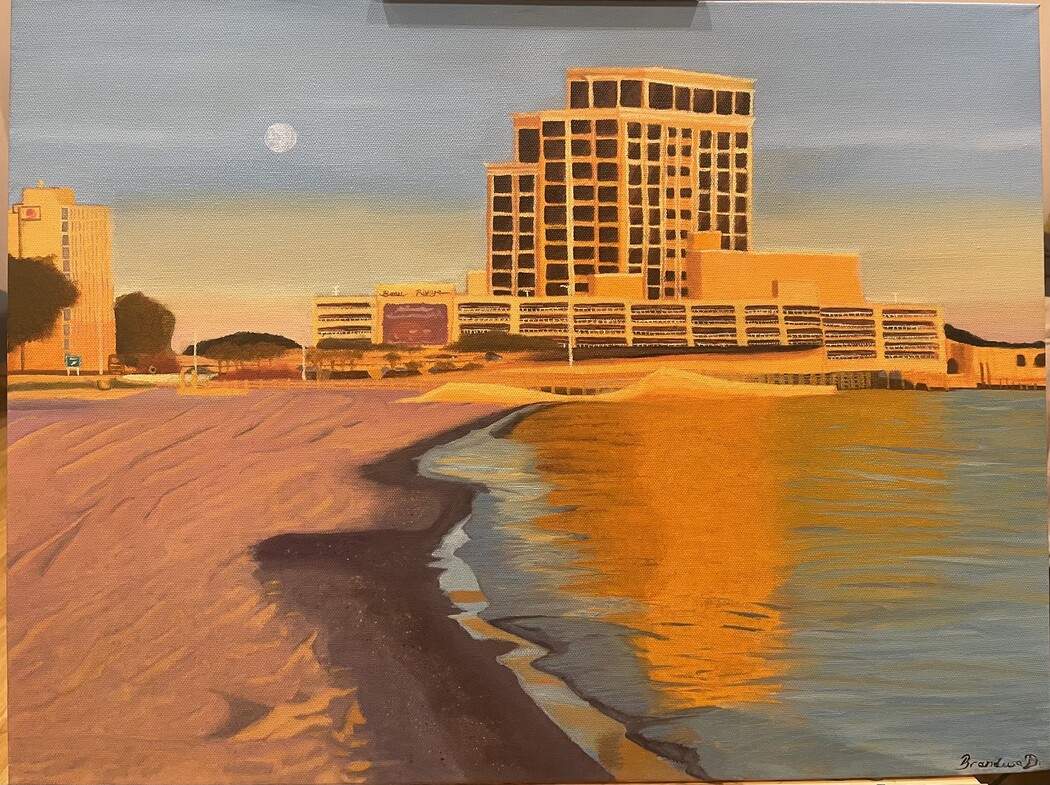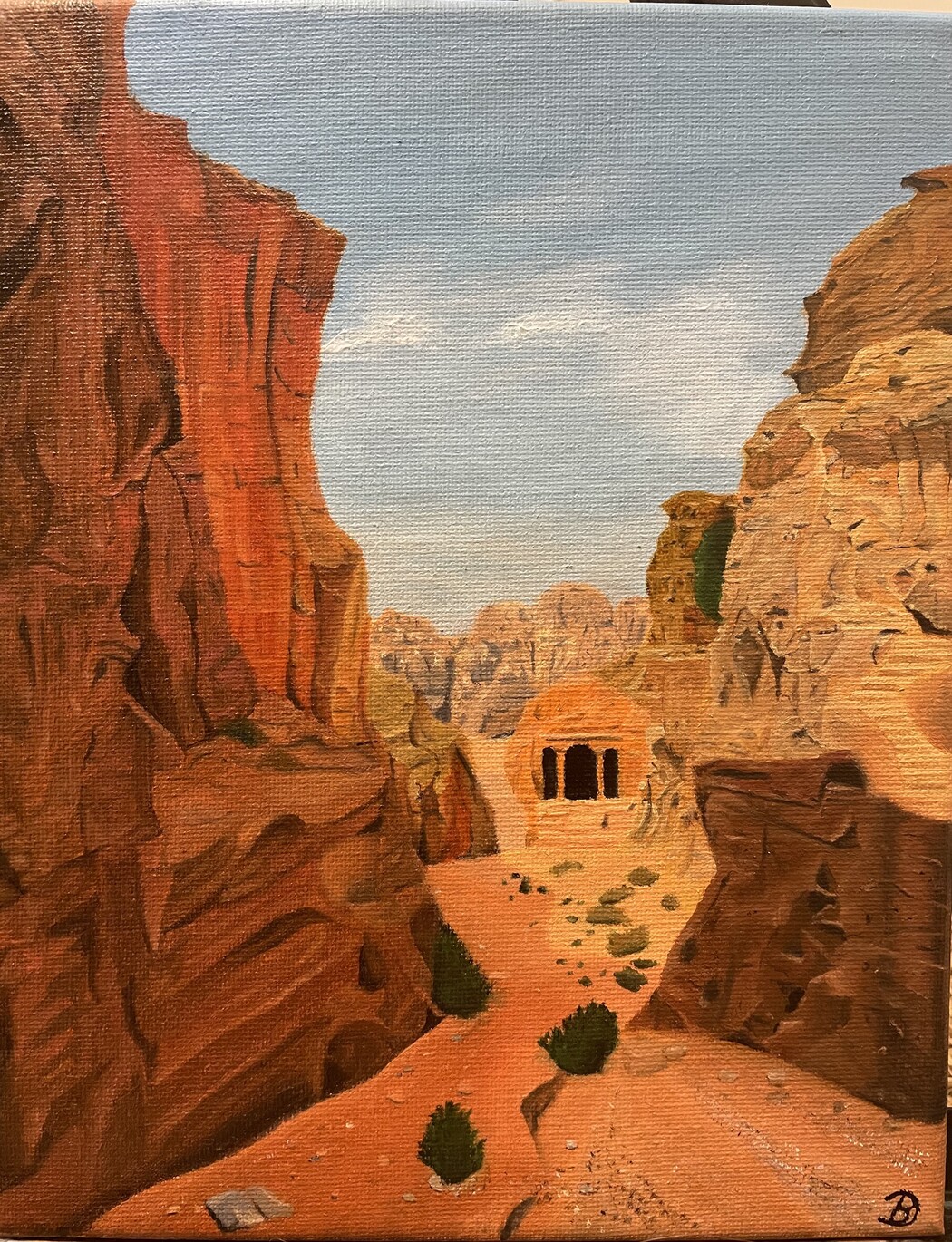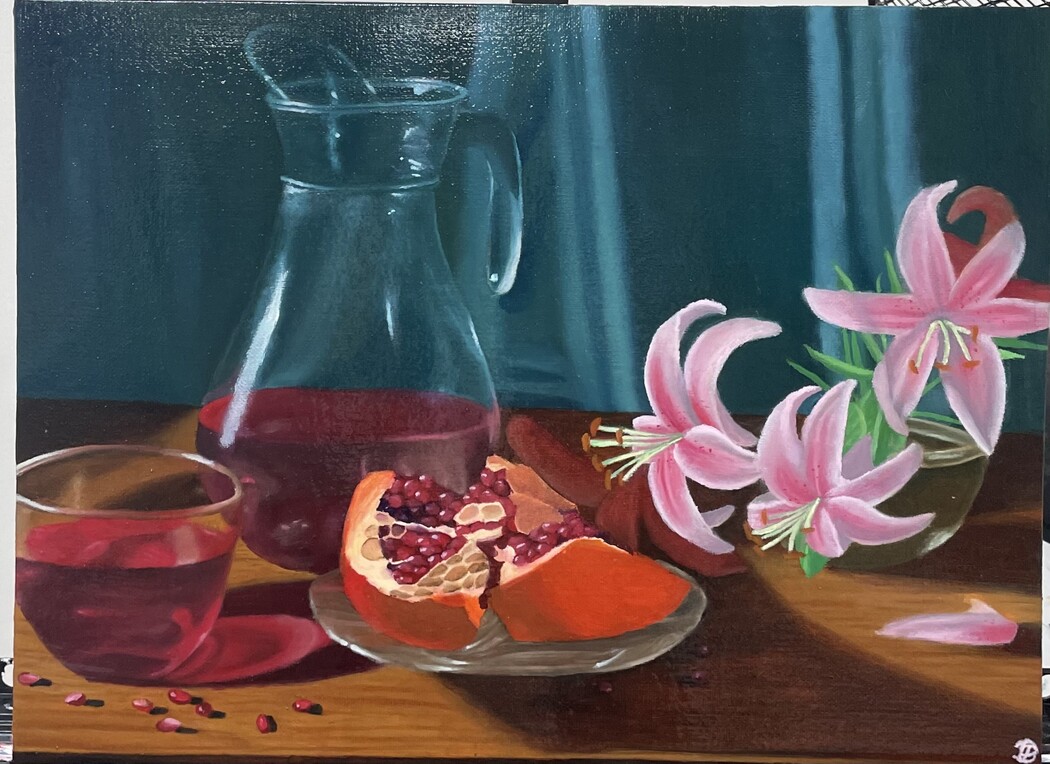Brandusa Draghici
Year of birth: 2000.
Where do you live: London, UK.
Your education: BSc Politics, Philosophy and Economics from the University of Warwick.
Describe your art in three words: Introspective, Feminine, Expresionist.
Your discipline: Oil Painting.
Website | Instagram
How has your multicultural background, having lived in Romania, France, and the UK, influenced your approach to painting?
My multicultural background, shaped by my experiences in Romania, France, and the UK, has profoundly influenced my approach to painting. Growing up surrounded by diverse artistic expressions allowed me to explore various art forms deeply. My mother played a crucial role in this journey; she ensured that my sister and I regularly visited museums and engaged in art-related activities, fostering our creativity. I am particularly grateful for her passion for artists like Monet and for the unforgettable experience of attending a Salvador Dalí exhibition, which left a lasting impression on me. This exposure to surrealism has inspired me to delve deeper into this art style as I continue to develop my own artistic voice.
Can you describe your creative process when working on landscapes or still life pieces? How do you begin a new painting?
My creative process for landscapes and still life pieces is deeply influenced by my travels and the connections I feel to the places I paint. I seek to capture a sense of peace, memorable moments, or meaningful symbolism in the landscapes I choose. In my still life work, I often incorporate symbolic elements. For example, in my piece “Pomegranate and Lilies,” the pomegranate signifies knowledge, while the pink and white lilies represent my rebirth as an artist. This painting holds special significance as it commemorates the work that reignited my dedication to painting over a year ago. When beginning a new painting, I first define my reference. This may involve altering the color composition of a photograph I’ve taken, researching stock photos for inspiration, or creating digital collages. Once I have a clear vision, I prepare my gessoed canvas and start the underpainting, carefully basing it on the reference I’ve established.
Your work often explores light, color, and texture. What inspires you most about these elements, and how do they influence your compositions?
My work often emphasizes the interplay of light, color, and texture, with a particular focus on creating balanced color schemes that complement one another. I tend to enhance the vibrancy of my paintings, often making them more colorful than my references. This has become a signature aspect of my style, emerging organically rather than through deliberate intent. In terms of light, I strive to ensure that the lighting in my references is effective, though I find it challenging to accurately represent light and shadows. Improving this aspect remains a key goal in my artistic development.
You specialize in oil painting. What drew you to this medium, and what do you find most rewarding about working with oils?
I specialize in oil painting, a medium I transitioned to from acrylics just last year. I often felt frustrated with acrylics, as they didn’t feel intuitive to me. Recognizing that I might enjoy oils, I invested in the materials, explored tutorials, and quickly found my passion for the medium. What I appreciate most about oil painting is the flexibility it offers—I can take my time to blend and adjust, making mistakes along the way. Working in layers allows me to see my pieces evolve, creating depth and richness that is immensely satisfying.
Nature seems to play a central role in your work. How do you decide which aspects of nature to depict, and what do you hope viewers take away from your representations of natural elements?
Nature plays a central role in my work, reflecting a deep connection I’ve had since childhood. When exploring, I remain attuned to my surroundings, seeking inspiration in the places I visit. If a location resonates with me, I capture it through photography, focusing on composition, which I later use as a reference for my paintings. My hope is that viewers experience the same sense of peace I felt while creating these works, connect with the symbolism, and feel inspired to explore the natural world themselves.
Can you tell us more about how you experiment with texture in your paintings? What techniques do you use to create depth and vibrancy?
Texture is a key element in my paintings, and I often experiment with physical textures, particularly in depicting water, such as splashes from waterfalls or the sea. I also challenge myself to replicate various textures within my compositions, like glass. In my painting “Pomegranate and Lilies,” for instance, I aimed to capture the nuances of four different types of glass, pushing my technical skills and enriching the visual experience.
Your pieces invite viewers to engage with nature’s beauty in a contemplative way. How do you balance dynamism and peacefulness in your compositions?
My pieces invite viewers to engage with nature’s beauty contemplatively, balancing dynamism and peacefulness in my compositions. While some works are more dynamic, I tend to gauge the overall feeling as I paint. For example, in “Mystical Waters,” I added a waterfall at the end because I sensed something was missing. Generally, I aim for a peaceful aesthetic, hoping to inspire viewers to reflect on their own experiences in nature and evoke memories of places that resonate with the tranquility and beauty depicted in my art.





Leave a Reply